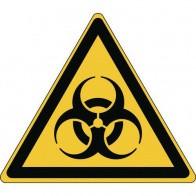
Based on what is indicated in Legislative Decree No. 81 of April 9, 2008, a biological agent is defined as any microorganism, even if genetically modified, cell culture, and human endoparasite that could cause infections, allergies, or intoxications.
| Endoparasites | mono- and multicellular |
| Fungi or molds | Yeasts, dermatophytes, and molds |
| Bacteria | Gram-positive (G+), gram-negative (G-), mycobacteria (acid-resistant) |
| Virus | With DNA, with RNA |
| Cell line cultures | Eukaryotic cell lines derived from organs and tissues of multicellular organisms |
| Allergens | Molecules and natural products, synthetic products, single complex molecules |
Biological agents are classified into the following four groups based on the risk of infection:
- GROUP 1 - includes agents that pose a low probability of causing disease in humans.
- GROUP 2 - includes agents that can cause disease in humans and pose a risk to workers; it is unlikely they will spread in the community; effective prophylactic or therapeutic measures are usually available.
- GROUP 3 - includes agents that can cause serious diseases in humans and pose a serious risk to workers; the biological agent can spread within the community, but effective prophylactic or therapeutic measures are usually available.
- GROUP 4 - includes agents that can cause severe diseases in humans and pose a serious risk to workers, and may present a high risk of spreading within the community; effective prophylactic or therapeutic measures are generally not available.
WARNING!
For those planning to carry out activities involving the deliberate use of biological agents from groups 2, 3, or 4, (Art. 269 of Legislative Decree 81/2008), at least 30 days in advance, the Rector, as the Employer, must send a notification to the territorially competent Supervisory Body, containing the risk assessment document related to the biological agents involved.
Furthermore, if the biological agent intended for use belongs to group 4, the Rector must be authorized by the Ministry of Labor, Health, and Social Policies in the manner indicated by Art. 270.
WHAT TO DO EACH TIME YOU INTEND TO USE A NEW BIOLOGICAL AGENT IN THE LABORATORY
If you intend to use a biological agent, it is necessary to request: the relevant Safety Data Sheet, if the agent is purchased, or, if the agent is supplied by a laboratory/hospital/research institution, a declaration indicating which group the biological agent belongs to ('Biosafety level').
1. The document certifying belonging to a specific group must be transmitted to the PREP, Prevention and Protection Service, along with the following information:
- a brief description of the research to be conducted with the agent in question;
- identification of the laboratory where the activity will be carried out;
- Detailed description of operational procedures from the storage phase to the disposal phase, indicating the Personal Protective Equipment that will be adopted and any hood under which the agent will be handled;
- Description of emergency procedures to follow in case of an incident.
2. The PREP will be responsible for:
- Conducting a biological risk assessment;
- Preparing any documentation to be sent to the Supervisory Authority if the biological agent belongs to group 2, 3, or 4;
- Verifying the adequacy of the laboratory containment level in relation to the agent's group.
3. The research activity can only begin after the procedures outlined in point 2 are completed.